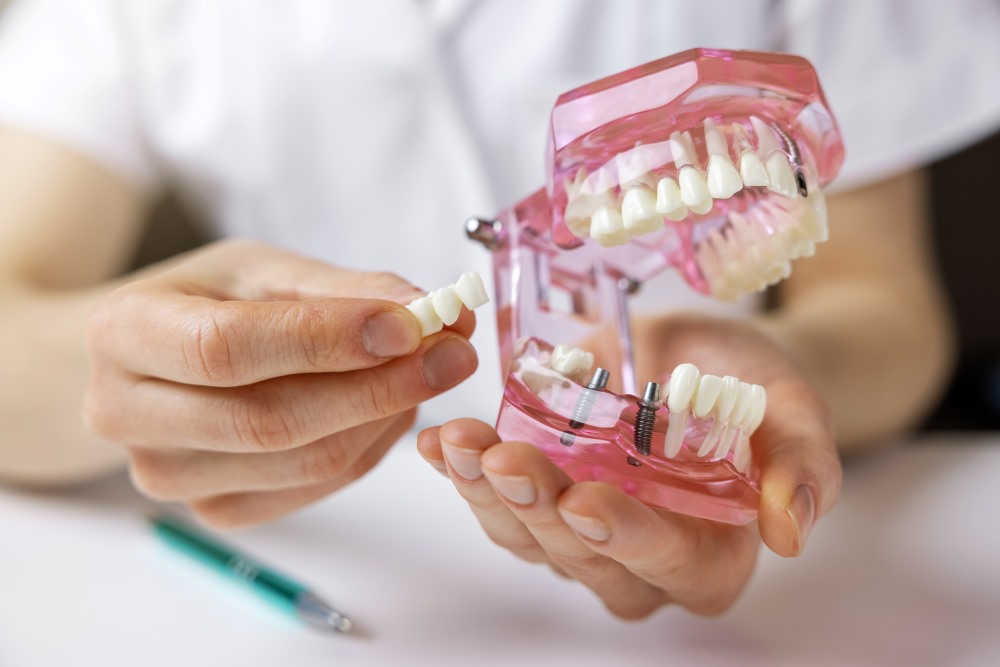Dental implants can effectively restore the function of missing or broken teeth, helping people achieve a full, healthy smile. Hundreds of dental implants are placed annually, making them one of the most popular procedures in oral health care.
While implant procedures are performed frequently, the process isn’t always fast or simple. Certain factors can make this procedure more complex. The biggest factor that can complicate dental implant treatment is having bone loss in your jaw. Find out how implant specialists address bone loss in this guide.
Causes of Bone Loss
In many cases, poor oral health can lead to concerns that facilitate bone loss, including the following common causes of bone loss in the jaw:
Untreated Cavities and Tooth Decay
When a cavity goes unresolved for a long period, bacteria can enter the tooth. The tooth may develop an infection that spreads to the jawbone. The result is bone loss and the need for a more invasive procedure, such as a root canal or tooth extraction.
Gum Disease and Poor Oral Health
Another common cause of jawbone loss is gum disease. A serious infection of the gums called “periodontitis” can develop due to poor oral health care. Without treatment, the infection can weaken the surrounding bone tissue. You can ward off gum disease by maintaining good oral health.
Trauma
Another concern that can cause bone loss is direct trauma to the tooth or jaw. Whether due to a sports injury or a serious fall, an impact on the jawbone can damage the bone structure. The impact can lead to breaks and cracks that promote disintegration of the bone.
The Impact of Bone Loss on the Dental Implant Process
Dental implants are generally straightforward procedures that, in some cases, can be completed in as little as one day. Unfortunately, many patients with bone loss must undergo a very different treatment process.
Bone loss complicates the implant process because it compromises the implant’s stability. When you have a dental implant, a titanium screw is placed in the bone tissue directly under the missing or extracted tooth. The replacement tooth is then attached to this screw in order to be held in place.
When the treatment area has suffered bone loss, there may not be enough tissue for a screw to be properly attached, or the tissue may not be dense enough to keep the implant stable. It may be impossible for the patient to receive dental implants unless the bone tissue is restored.
How Implant Specialists Address Bone Loss
Implant specialists are highly skilled when it comes to placing dental implants, even in the most difficult of scenarios. Many of these specialists have placed thousands of dental implants throughout their careers. They have confronted all kinds of complicating factors, including bone loss.
When it comes to dental implants for a patient with bone loss, dentists and oral surgeons take a number of different approaches. The most frequently recommended method is using bone grafting to restore adequate bone tissue to the area.
Bone Grafting
Bone grafting is a process that involves using bone from your own body or another source to add tissue to areas where bone loss is present. Before a patient with bone loss receives dental implants, they might undergo this procedure. Once the bone graft has healed, the patient should have enough bone tissue to support the implants.
Depending on your surgeon’s approach and your unique needs, the bone may be harvested from elsewhere on your body for bone grafting, or synthetic bone material may be used.
Sinus Lifts
Another procedure that addresses bone loss is a sinus lift. A sinus lift can be used to increase the height of the jaw before a bone graft. This procedure can provide enough material to securely attach a dental implant screw.
Platelet-Rich Fibrin
In some instances, platelet-rich fibrin may be used wherever bone loss is present in the jaw. Platelet-rich fibrin (PRF) is harvested from your own blood and injected directly into the jaw. This fibrin promotes new bone development and restores tissue in order for a dental implant to be attached.
Dental Implant Specialists of Atlanta
You may benefit from dental implants if you are missing one or more teeth. These durable restoration pieces can help you achieve a full, beautiful smile. Dr. Brett Langston and the Dental Implant and Aesthetic Specialists team perform implant procedures for patients throughout the Atlanta area.
Dr. Langston specializes in tooth replacement, offering experienced care for patients looking to improve their oral health and aesthetics. To schedule a consultation, contact us online or by phone today.

